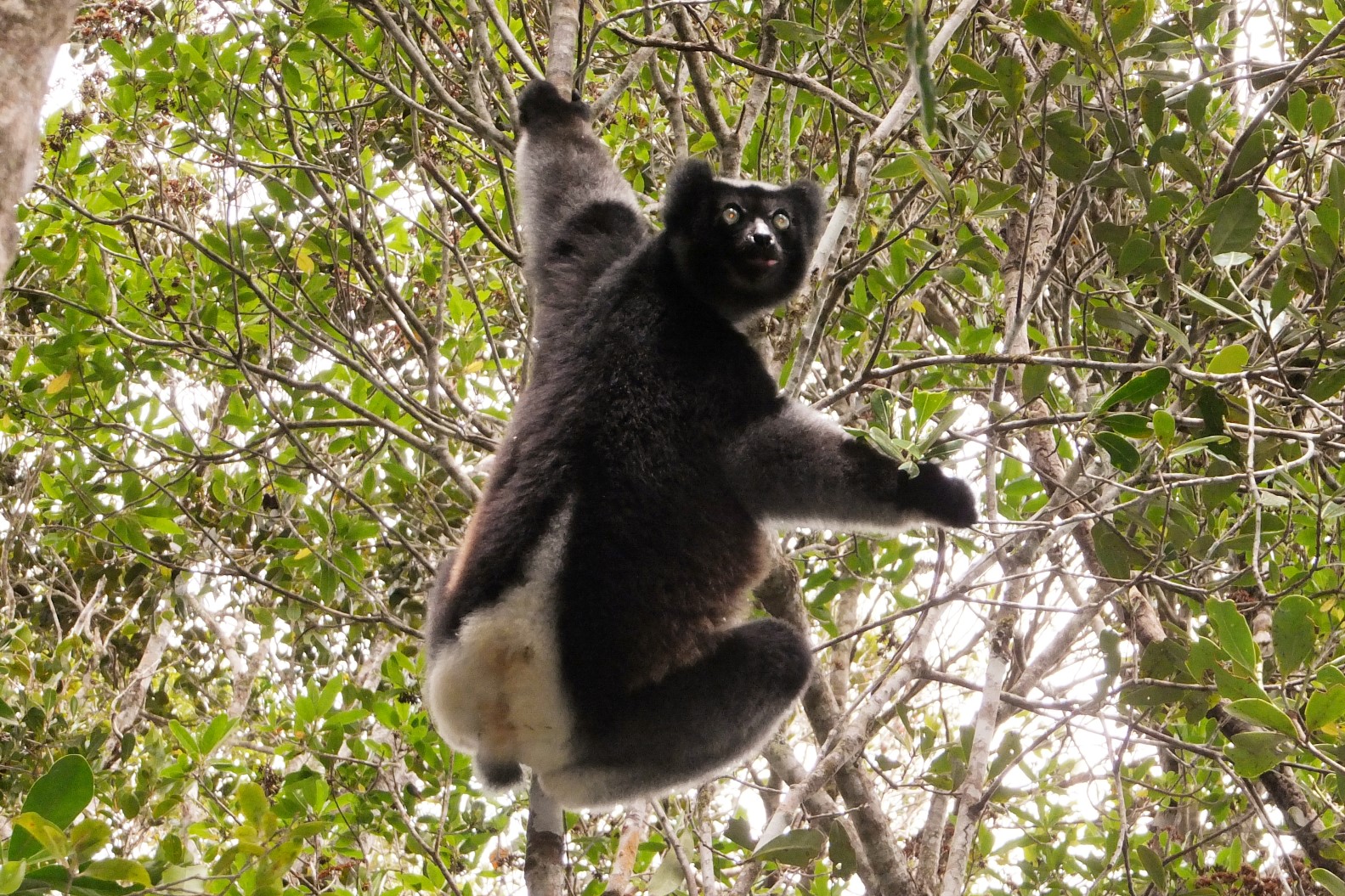Rose Marie Randrianarison (Madagascar Country Coordinator), Chia Tan (Vice President) and their colleagues recently published a study about the indri (Indri indri), the largest living lemur in Madagascar. Writing in the International Journal of Primatology, they describe the general diet of this critically endangered species and, for the first time, offer insights into the occurrence of regurgitation and reingestion (R/R) behavior.
The study, which was conducted at Maromizaha Protected Area, represents the most in-depth research of the indri to date, with over 4,000 hours of observational data on 38 individuals from six family groups.
A known folivore, the indri’s diet consisted largely of leaves (85%) and fruits (13%). At least 138 food plant species were identified, with the most consumed species being members of the aromatic Ocotea (Lauraceae). Because the study spanned nearly a decade (2011-2019) and the data focused on the feeding behavior of many indris, a great deal of dietary flexibility was observed. This finding suggests that the indris may exhibit individual/group preference and/or modify their diet in response to annual or seasonal changes in food availability.
The R/R behavior that was found in some but not all indris is still a mystery, and may be triggered in part by the secondary compounds present in their food plants. Further observations of the lemurs coupled with phytochemical analyses of their foods may shed light on the underlying cause of this behavior.
